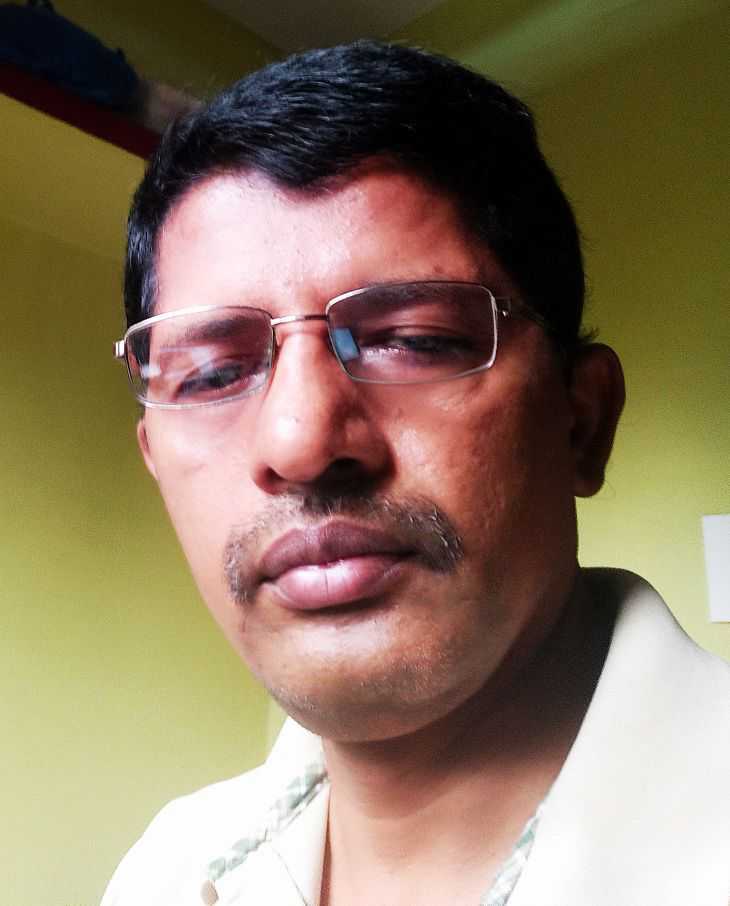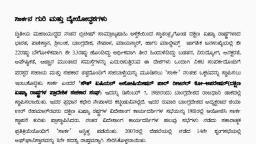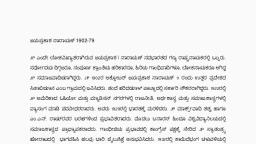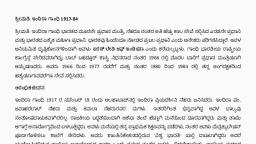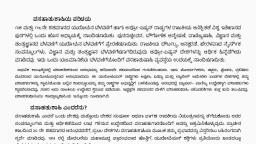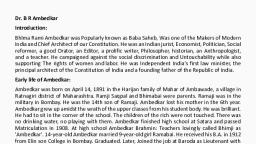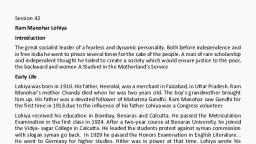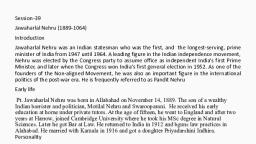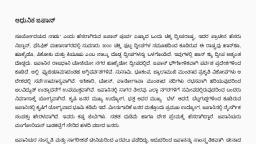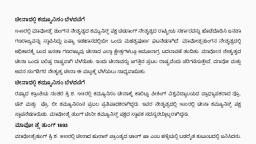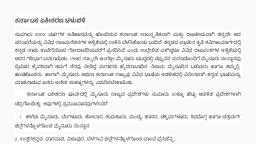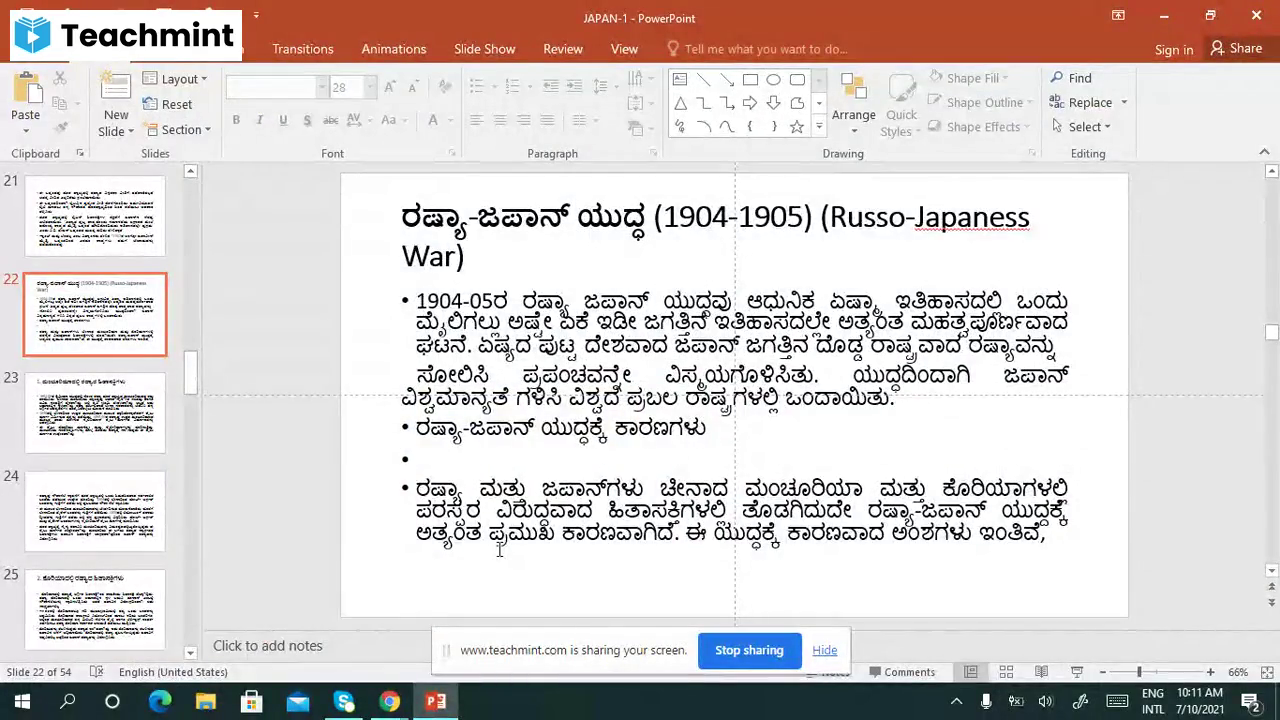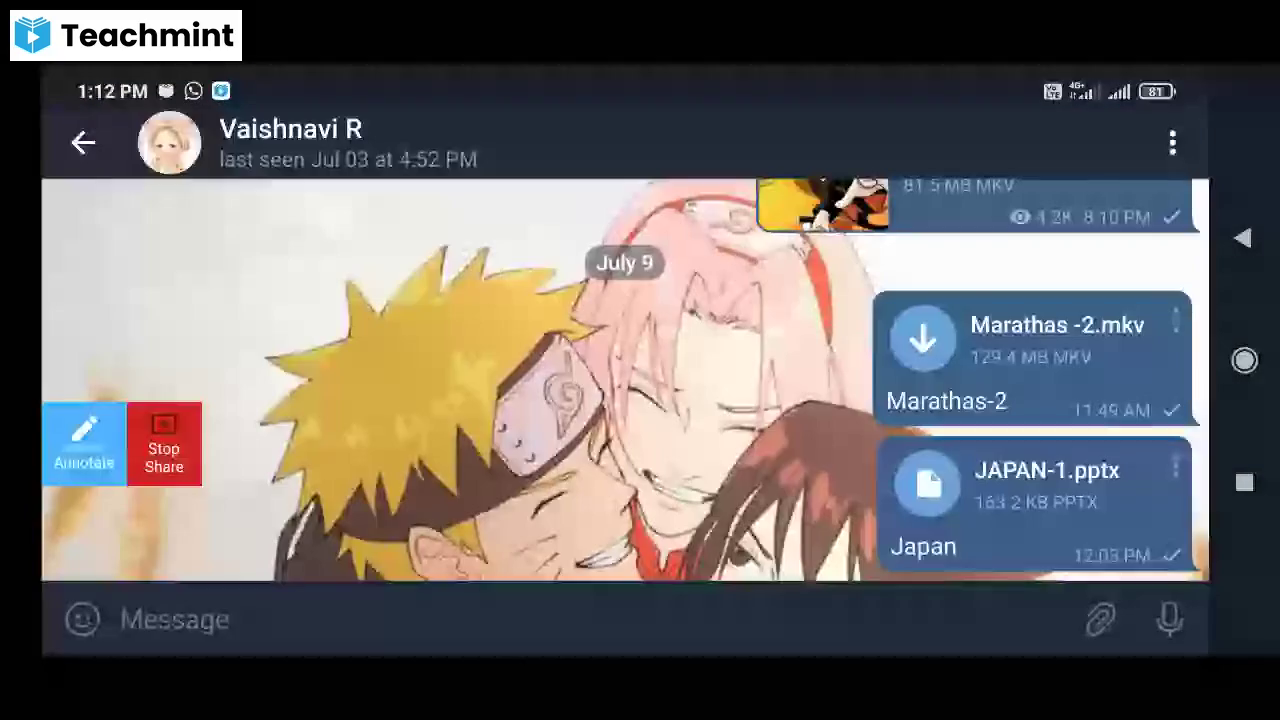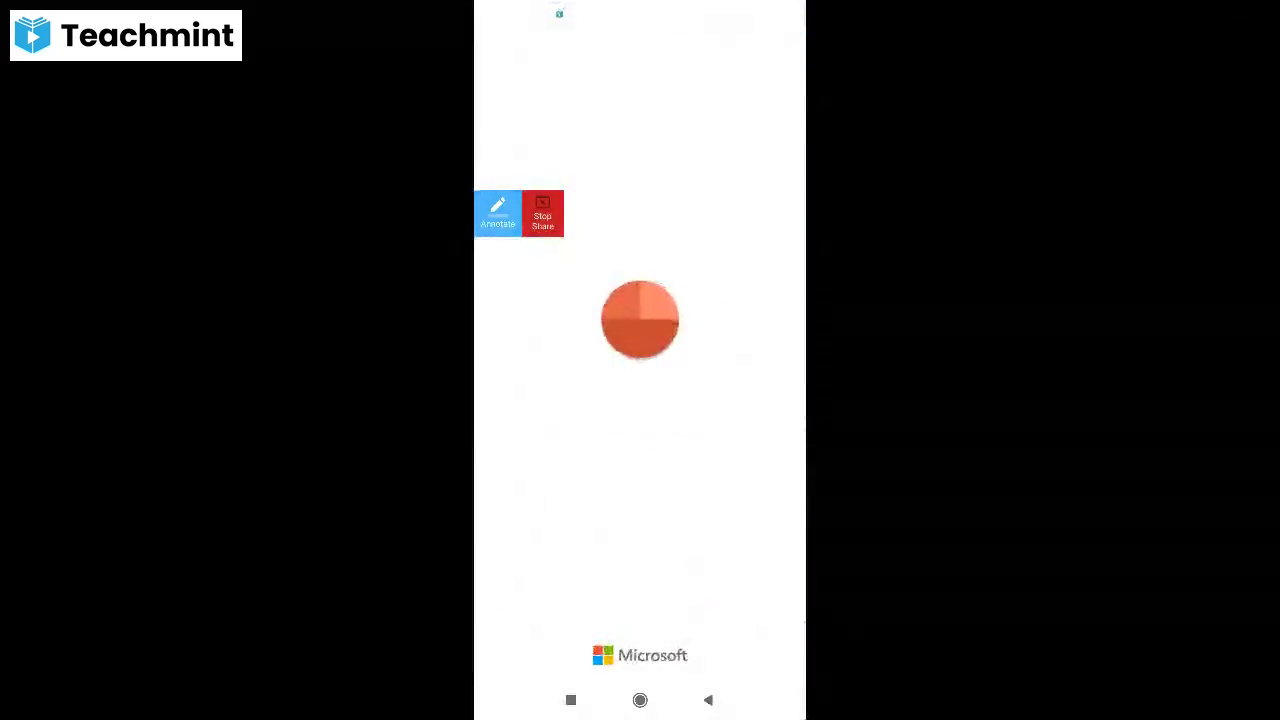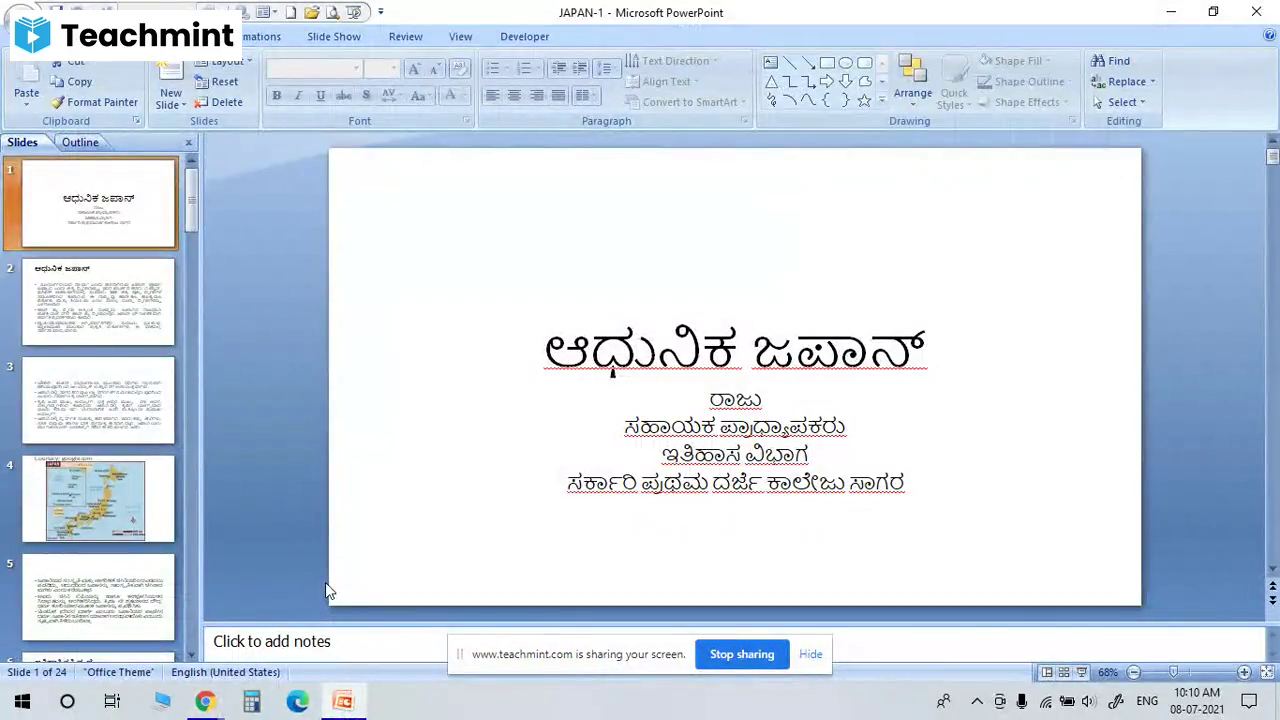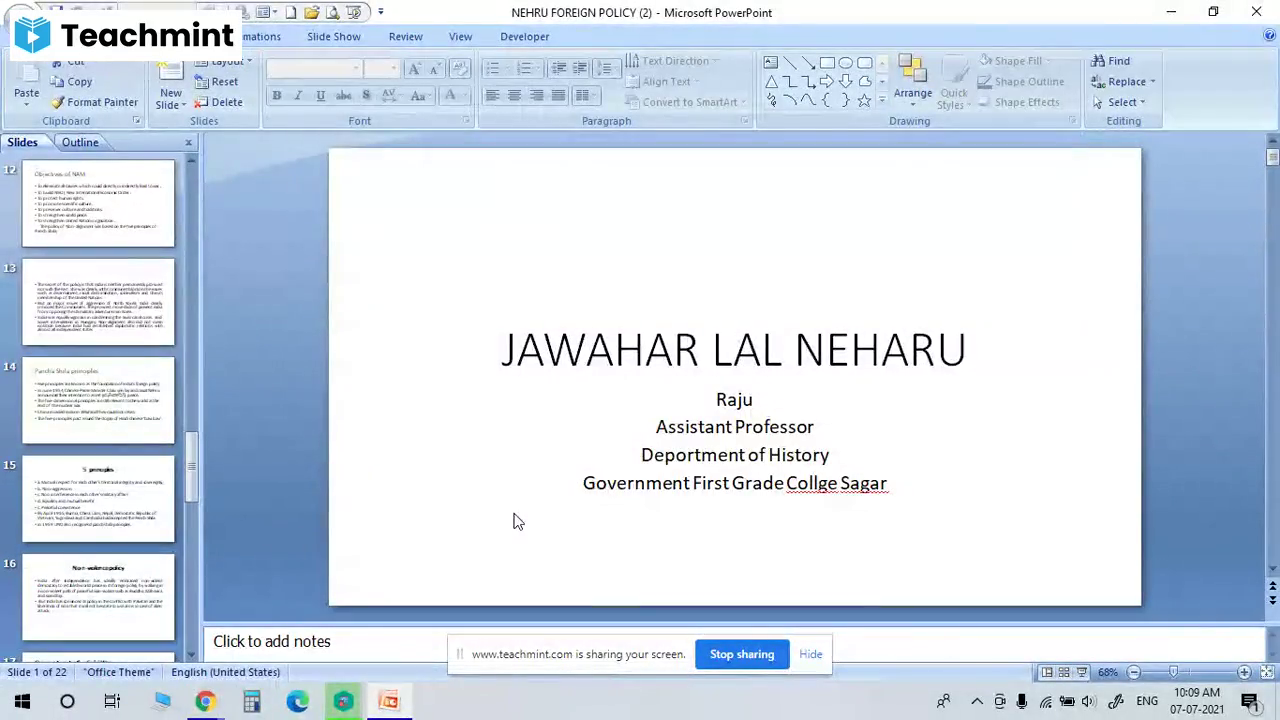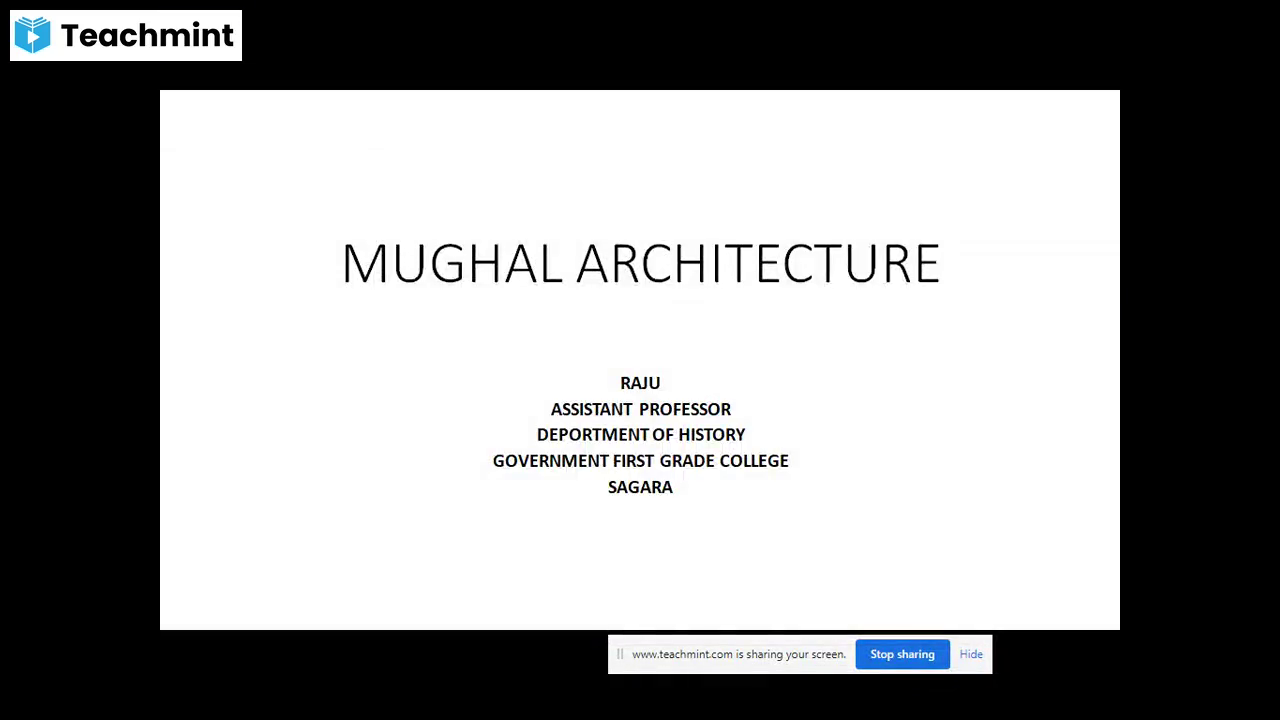Page 1 :
Crips Mission 1942, , In World War II, the British engaged in war with the Allies without the permission of the Indians,, causing the displeasure of Congress leaders. After the rejection of the August proposal by the, British, a commission was sent to India in 1942 under the chairmanship of Sir Stafford Cripps, a, member of the House of Commons of England, to negotiate with Indian political leaders for the, co-operation of the Indians., , Reasons to send the Commission to India, , The Japanese invasion of Asia grew into an anti-British imperialist challenge to England. In 1942,, Chinese President Chiang Kai-shek visited India and discussed with Indian leaders and advised, the British to hold talks with Indians during the war. US President Roosevelt asked Churchill to, allow the Atlantic Charter to apply to India and become self-governing. Australian Foreign, Minister advised Churchill to negotiate with India. The English statesman H. J Laski called for, India's help to win the war. Subhaschandra Bose planned to invade India with the help of, Germany and Japan. With international pressure on the British prime minister, Churchill, who, had declared a post-war Dominion status, sent a delegation to India to discuss with Indian, leaders., , Proposals of Crips Mission, , Immediately after the end of the war, a new Constitutional Council was formed to form the, Constitutional Committee of the members of the British India and princely States. The British, government agrees with the constitution created by the All-Parties Meeting, and if no provincial, constitution is accepted, the defending constitution is maintained. Reforming the Viceroy's, Executive Committee and appointing Indians to all accounts except the war account. India will, be granted Dominion status after war. The formation of the Indian Union after the war would give, states the right to join or remain independent. The Union of India should not impose any, restrictions on future relations with the British Commonwealth. The responsibility of India's, defense should be with the British Cabinet until the end of the war. Viceroy has powers., , Cripps suggestions were not satisfied by all parties in India. The Muslim League rejected, the suggestions that the Congress did not provide a security account to the Indians, but that, Pakistan was not in demand. As Nehru said, "the friend Cripps came to India as a demon." Gandhi, criticized the bank's name as "a post dated check that has been bankruptcy". Imperialist Prime, Minister Churchill criticized Gandhi as "half-hearted"., , Quit India Movement 1942, , After the rejection of Cripps' suggestions, the rapid Japanese conquest of Asia and the conquest, of many territories by the Japanese became a major challenge for the British. At this time Gandhi, called on the Quit India Movement to pressure the British government and accept the, independence demand. Thousands of people across the country participated in the movement, with love for the nation due to calling on Gandhi's ‘do or die’., , Causes of the Quit India Movement, , Failure of cryps proposals, Japanese invasion, Gandhi’s intention to mobilize Indians,, Independence of the country's people, love of war, economic warfare., , Quit India resolution
Page 2 :
The Indian National Congress Committee convened a special session in Mumbai on August 7, and 8, 1942 to discuss the Quit India Movement. Nehru's Quit India Resolution was approved by, the Indian Congress on August 8. Gandhi then addressed the people of the country and said that, every Indian has the right to carry out any kind of movement, whether for picketing, strike or, non-violence satyagriha. Gandhi called to join the movement by the decision of ‘Do or Die’ and, declared that they would quit India., , Arrest of Congress leaders, , At midnight on August 8, all members of the Congress Working Committee, including Gandhi,, Nehru, Azad, Vallabh Patel, Sarojini Naidu, Mahadeva Desai, Rajendra Prasad and Rajaji, were, arrested and detained at the Poona prison. They arrested 148 Congress leaders. The police locked, the offices of the Congress, seizing its assets and prohibiting the National Congress Party., , Beginning of the Quit India Movement, , The nationwide Quit India Movement began as Gandhi called. Despite the arrest of all the national, leaders, faculty and students boycotted school colleges and placed foreign objects. Workers went, on strike. Demonstrations, parades, and protest marches were widespread throughout the country., Campaigners carried out the destruction of the post office, police station, railway stations, the, telegraph, the destruction of power lines and government buildings. He set fire to public, buildings. With the boycott of foreign goods, the British left India with the slogan, Chale Jaw and, Quit India. Without any leaders, people volunteered to take part in a large-scale campaign in, Bombay, Calcutta, Delhi, Ahmedabad and Varanasi. The people threw down the shackles of, government arrest and terrified the British. Tricolor flags flew over government offices. The Esur, Movement in Karnataka is a shining example of the self-rule that declared independence against, the British in many parts of the country. The movement destroyed 208 police stations, 332 railway, stations, and 945 post offices, , The Establishment of parallel governments, , During the Indian Movement, there were attempts to set up alternative governments in many parts, of the country against the British government. In 1942, the people of Esuru village in Shimoga, district had declared an independent village. This led to the Esur tragedy. Similarly, in the United, province, Chitto Pandey and Maharashtra's Satara, Nana Patel created a government. Each of the, governments were established in the Tamluk of Bengal, Champaran of Bihar, the Tulture of, Orissa. Young men and women were actively involved in the movement by establishing, associations called Mahishadala and Vanara Sena., , Repression of the Quit India Movement, , The British acted aggressively to suppress the movement. Police and soldiers opened fire on, protesters, killing goalkeepers, lathi-charging and killing innocent innocent people. One-and-ahalf million people were brought into the country through mass arrests. About 10,000 people were, shot dead by policemen and 20,000 were injured. It was common for police to torture people and, confiscate their possessions. The police have arrested 92,000 people and fined them two and a, half crore rupees, , Underground movement, , The underground movement that disturbed the country continued despite mass repression, against the British. Its leading leaders were Jayaprakash Narayan, Mrs. Sucheta Kripalani, Rama
Page 3 :
Manohar Lohia, and Mrs. Aruna Asaf Ali. The Quit India Movement was kept alive until 1944 by, scholarly acts such as demolition, dismantling of railroads and attack on police stations., Merchants, businessmen, women and children secretly funded and provided shelter for, underground fighters. The fight became known as the Karnataka model, when the Mylara, Mahadevappa and his team robbed the British Treasury in Hosaritthi of Haveri district but they, were died due to British fire., , The reasons for the failure of the Quit India Movement, , Without the leaders, the movement would have escalated, with the arrest of Gandhi and all other, national leaders. This movement was exacerbated by the lack of a specific organizational structure, that was not preordained. The rich, the zamindars, the kings, the big businessmen did not support, the movement. The Communists assisted the repression of the movement as agents of the British., Muslims side away from this movement for their separate Pakistan demand. The British loyalty, to government officials, government domination, Ambedkar and the Hindu Mahasabha did not, support this movement., , The significance of the Quit India Movement, , Although the Quit India movement failed, it brought the independence days closer. For a long, time in India, the British realized that their rule could not be sustained. The movement brought, about the importance of the underground movement in India abroad. This movement has been, compared to the Bastille tragedy and October Revolution of Russia by Ishwari Prasad, , Subhash Chandra Bose 1897 to 1945, , Netaji Subhash Chandra Bose India's famous revolutionary freedom fighters, INA troops,, invincible Japanese patriots invaded India through their INA forces to liberate India from the, capitulation of the patriot, great organizer, patron of Jaihind. "You give me your blood. I will give, you freedom" and the slogans of "Delli Chalo" still resonate in India today., , Early life, , Subhaschandra Bose was born on January 23, 1897 in Cuttack of Orissa, the son of Janakinatha, Bose and Prabhavati Devi. The talented Subhash received his BA degree from the Presidency, College of Calcutta and a Master's Degree from the University of Calcutta. He moved to England, to prepare for the ICS exam at his father's wish, joining the Civil Service in 1920, ranking fourth, in the ICS exam. He resigned from the post of ICS and returned to India in 1921, unable to handle, both the Country Service and the British Government Service. Enraged by the Jallian Wall Bag, tragedy, Shubhas met Gandhi and, on his advice, accepted Chattaranjan Das as their political, master and became active in the independent movement under his guidance., , Freedom fighter, , Subhash, who participated in Gandhi's non-cooperation movement, was jailed for displaying a, black flag against the Prince of Wales in Calcutta. The activists of the Swaraj Party, he, condemned the plight of the British by writing articles in the forward newspaper. As Principal of, the National College of Calcutta and Mayor of Calcutta, Shubhasa participated in a boycott, campaign against the Simon Commission in 1928 and celebrated the entire parade. Along with, Nehru, the entire Swaraj resolution was passed at the Lahore Congress session in 1929. Subhash, later established an association called Independence of India League and maintained close contact, with the revolutionaries. As President of the Trade Union Congress, participated in the Salt, Satyagraha movement and compared the Dandi March to the return of Napoleon Bonaparte. He
Page 4 :
opposed the Gandhi Irvine Pact and was arrested for fiercely protesting the hanging of Bhagat, Singh Sukhdev Rajguru. On a tour of Europe in 1933, he married a German woman millstone., While living in the Austrian capital of Vienna, he wrote the book "Indian Struggle"., , Subhash Chandra Bose as President of National Congress, , Subhashchandra Bose, the most popular leader after Gandhi. He was elected president of the 1938, Haripur Congress session with the support of the Socialists. At the session, a decision was taken, to implement a socialist form of economy. He also submitted his candidacy for the 1939 Tripura, Congress session. Gandhi opposed this and suggested contesting Pattabhi Sitaramayya. But, Pattabhi Sitaramaiah's defeat was a disgrace to Gandhiji., , Forward block party, , Subhash Chandra Bose, along with his Forward Bloc Party, intensified the struggle against the, British by forming structural programs on behalf of peasants. With the onset of World War II,, England's German counterparts, with the help of Italy and Japan, called upon the Indians to expel, the British from India. The British government deemed Subhash a revolutionary threat and, arrested him and put him in the Presidency Prison. In opposition to this started fasting the health, status began to deteriorate. So the government released them from prison and put them under, house arrest. In 1941, with the help of Shisir Bose, disguised himself as Maulvi and escaped from, house arrest at midnight and traveled to Peshawar under the guise of Pathan and traveled to Kabul., He then traveled to Germany via Moscow and met with the Nazi dictator Hitler in Berlin, where, he received his support and came to Japan with U-boat., , India National Army, , The role of the Azad Hind Fauz Army in India's independence struggle was brilliantly co-founded, by Captain Mohan Singh and Ras Bihari Bose. Subhash Chandra Bose, who later took over the, leadership of this army, invaded India with the help of the Japanese and expelled the British and, set out to liberate the country. Captain Mohan Singh, who was imprisoned by the Japanese in, Malaysia and the revolutionary Ras Behari Bose, who was stationed in Japan, tried to bring the, Indian Independence League to India by uniting Indians in Burma Malaysia, Singapore, China,, Japan, in 1942, Tokyo. At the same time, Subhash Chandra Bose, who arrived in Japan from Uboat from Germany, was appointed as the Chief of the Army and later named as the Indian, National Army. In the beginning, the Jhansi Rani regiment organized the under the leadership of, Lakshmi Swami Nathan, with 45,000 troops under the command of the Subhash in front of the, INA consisting of 16300 soldiers. Speaking on Tokyo Radio, Subhash announced that attacking, the eastern border to expel the British., , Formation of Independent Government of India 1943, , Subhash Chandra Bose, aided by the Japanese, established an independent Indian government in, Singapore and announced its own tricolor flag and tiger emblem. His independence was, recognized by Japan and other 1 1countries. He then called the INA soldiers Chalo Delhi. Japan, relinquished the Andaman and Nicobar Islands to its independent Indian government. Netaji, named the Andaman as Shahid in the memory of the martyrs and named Swaraj for Nicobar, Island. The General Commander-in-Chief of the INA Army, he divided the force into three, platoons and named them Gandhi-Nehru and Azad and appointed Captain Shahnawaz Khan,, Captain P K Sehgal and Captain G S Dillon as captains. Subhash instigated the soldiers, saying,, "You give your blood, I will give you freedom" with the jai Hind slogan, training the soldiers
Page 5 :
with mutual confidence and patriotism and trained them for any sacrifice. The soldiers lovingly, called the Netaji., , Attack of INA, , INA soldiers attacked along with the Japanese, invaded Southeast Asian countries. Then on, February 4, 1944, he crossed the Burma border and invaded India. Immediately after touching, the ground of India, Jaihind chanted the tricolor flag and sang the Onde Math rum national, anthem. The next goal was to raise the tricolor flag at the Red Fort. That was after the declaration, of Chalo Delhi sank after INA soldiers defeated Nagaland's capital Kohima and Manipur's capital, Impala. Lack of arms, food supplies, the absence of airplanes, lack of the Japanese background, contribute to their defeat. INA Soldiers Occupied about 150 sq. miles an area. The British, captured the INA soldiers and arrested at the Red Fort., , Death of Subhash 1945, , the meantime he traveled from Bangkok to Tokyo to collect more weapons. But on August 18,, 1945, Tokyo Radio reported that he died in a plane crash that occurred in Taipei's capital, Taiwan., , Trial of INA soldiers, , The British government captured nearly 20,000 soldiers and brought them to India to be tried in, a military court on the charge of treason. leaders of all political parties came forward to argue on, their behalf. At the trial, the 3 officers were convicted and sentenced to life imprisonment. they, were acquitted on January 3, 1946, of tremendous opposition throughout the country., , Cabinet Commission 1946, , Clement Attlee became Prime Minister after the Second World War, when the Labor Party came, to power in England's general election. The liberal prime minister decided to hand over power to, India and sent a cabinet commission comprising his cabinet, Pethick Lawrence, Sir Stafford, Cripps and AV Alexander to negotiate on the issue. It submitted its report to the government in, consultation with leaders of various political parties., , Reasons for the formation of the Cabinet Commission, , Protests throughout the country against the trial of INA soldiers. Indian Navy rebellion in, Mumbai. Protest of the police force. Working class protests in India. Political change in England., The effect of Il world war., , Highlights of the Cabinet Commission's Plan, , 1. The Cabinet Commission to form a federal government comprising of British India and, domestic states. 2. Creating a Constituent Assembly consisting of provincial assemblies and, domestic states to create the Constitution of India.3. A group of British Indian states divided into, 3 parts: Hindu dominated Madras Bombay, Uttar Pradesh, Middle East, Bihar and Orissa. Muslim, majority Punjab Northwest province Balochistan and Sindh. Assam and Bengal province. 4. The, creation of an intergovernmental national government consisting of various political parties until, a new constitution is drafted. 5. The federal government is taking a majority decision on, communal matters. 6. Giving India complete freedom to stay in the Commonwealth 7. After the, enactment of the new constitution, the legislature was empowered by the provinces of the country, to join the same group or group. 8. Rejected the demand for a separate Pakistan, , Advantages of the Cabinet Commission
